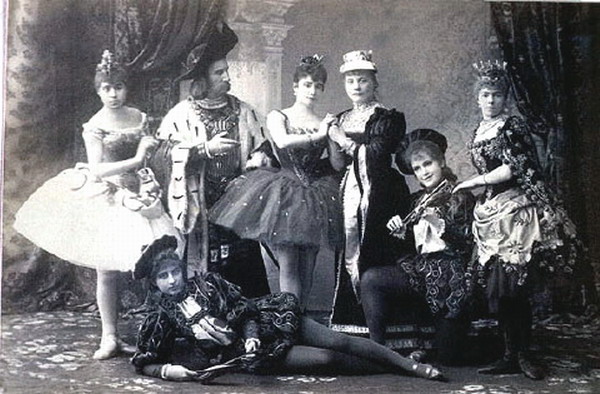
This weekend, the Nashville Ballet opens their season with Tchaikovsky’s iconic The Sleeping Beauty. The work is considered the zenith of classic ballet, and all three of Tchaikovsky’s ballets—Swan Lake, The Sleeping Beauty and The Nutcracker—have become beloved giants in the modern dance world, described by arts writer Maxim Boon as having been “reinvented, reappropriated, made-over, dumbed-down and spruced-up more than any other work in the canon of the art form.”
Originally clocking in at nearly 4 hours, The Sleeping Beauty has been adapted into a 2 ½ hour performance by Nashville Ballet Artistic Director and CEO Paul Vasterling, who also provides additional choreography. The score will be performed live by the Nashville Symphony.
With such a colossal presence in the classic ballet repertoire, it’s worth noting that Tchaikovsky never lived to witness the massive success of his work. In fact, Swan Lake was met with abysmal reviews when it premiered in Moscow in 1877. The Nutcracker fared no better. And while The Sleeping Beauty was Tchaikovsky’s best-received ballet upon its premiere, the reactions of audiences and critics were decidedly mixed.
Some bemoaned what they saw as an overly sparse plot: “They dance, they fall asleep, they dance again,” one critic said of the 1890 premiere. Other naysayers had trouble letting go of the light, rhythmic and nondescript pre-Tchaikovsky ballet music that ultimately took a back seat to the virtuosity of the dancers. The rich Romanticism that Tchaikovsky employed—and the notion that the music should be artistically on par with the choreography— was nothing less than radical.
While the plot of The Sleeping Beauty may be simple, the lush and complex music penned by Tchaikovsky is one reason that the ballet is not. Igor Stravinsky, who would continue stretching the boundaries of ballet with the 1913’s The Rite of Spring, praised Tchaikovsky’s music ahead of the ballet’s London premiere with Ballet Russes and director Serge Diaghilev: “The convincing example of Tchaikovsky’s great creative power is beyond all doubt the ballet The Sleeping Beauty…I have spent some days of intense pleasure in finding again and again the same feeling of freshness, inventiveness, ingenuity, and vigor.”
Another complexity of The Sleeping Beauty is the choreography, originally conceived by the masterful Marius Petipa and elevated by Tchaikovsky’s music. Today, it’s known as the most technically challenging piece of choreography for the ballerina. Vasterling says that Petipa “was at the height of his choreographic prowess when he created The Sleeping Beauty. He made full use of the newly advanced pointe work, and the steps are still some of the most difficult around. Dancers are often measured by their ability to master this work, and it remains the ultimate test for a ballet company.” Nashville Ballet Company dancer Sarah Cordia, who will perform the lead role of Aurora for the first time on Saturday evening, says Aurora is the most challenging role, both mentally and physically, that’s she’s ever performed.
Kayla Rowser discusses taking on the character of Aurora. She’ll dance the role during the afternoon performances on Saturday and Sunday.
It’s a shame that Tchaikovsky—who on a professional level was sensitive to harsh criticisms of his music, and on a personal level battled severe bouts of depression—never saw his ballets reach the iconic status they hold today. The composer died in 1893, just three years after the premiere of The Sleeping Beauty.
Still, Tchaikovsky had enough faith in himself to know that The Sleeping Beauty was an extraordinary achievement. He wrote to to his close companion and patron Nadezhda von Meck in July 1889: “It seems to me, my dear friend, that the music for this ballet will be one of the best of my works. The subject is so poetic, so perfect for music, that while I was creating, I was very carried away and wrote with the warmth and desire which always determines the worth of a work.”
